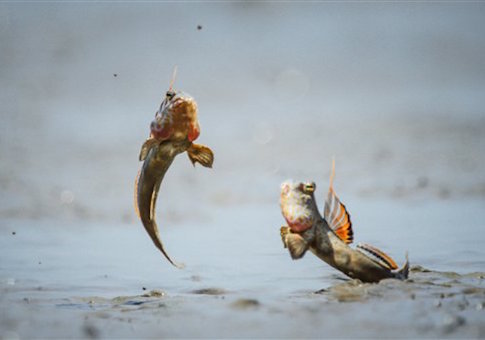The federal government spent millions of taxpayer dollars studying if women can pick Barbie out of a lineup, creating robot flowers, and building a computer that binge watches Desperate Housewives, according to a new report on wasteful spending.
Sen. Jeff Flake (R., Ariz.) on Tuesday released Wastebook: PORKémon Go, the latest chronicle of waste in a series started by former Oklahoma Sen. Tom Coburn (R.). The report covers 50 items and over $5 billion in spending on outrageous government programs and frivolous projects.
"Within mere days, the national debt will top $20 trillion, the largest amount ever owed by any nation in history, and the federal government’s authority to borrow expires in March," Flake wrote in the introduction to the report. "But rather than making a long overdue resolution to be fiscally responsible, the promises from Washington are to spend even more."
The report revealed countless examples of questionable science spending, including $300,000 from the National Eye Institute and National Science Foundation studying whether women or men spent more time playing with Barbie dolls when they were children.
"The researchers' intuition was that men may have played more with Transformers then [sic] Barbies when they were younger, and vice versa for women," according to the report.
Researchers at Vanderbilt University also studied whether women were able to identify the real Barbie in a lineup of other dolls, challenging the "popular misconception that all Barbie dolls have the same face," a researcher said.
The study revealed that different Barbie models have "distinctly different faces" and that "they appear to be modeled on different women."
Many items in the report were funded by the National Institutes of Health, which spent $3.4 million for hamster cage matches. Instead of "shrimp fight club," researchers at Northeastern University are now pumping hamsters full of steroids to see how vicious the rodents become.
The NIH also spent $3.5 million to find out why people are afraid of the dentist, and $1.3 million creating robot flowers to study bees. A $5 million study looked at the partying habits of fraternities and sororities. That study found, among other things, that frat boys tend to sleep in late.
After mountain lions, monkeys, and shrimp, the government is now putting fish on a treadmill to see how long they can exercise.
The University of California-San Diego Scripps Institution of Oceanography received $560,000 from the National Science Foundation for the workout regimen for Mudskippers who were "exercised to exhaustion" while moving on the treadmill at a rate of two inches per second.
The National Science Foundation and Department of Defense teamed up to spend at least $460,000 for research that created a computer to watch Desperate Housewives.
"The computer couch potato project" tested whether an algorithm could predict when characters on the prime-time soap opera were going to kiss or hug.
The computer was not very successful, predicting the characters' actions just 43 percent of the time.
Part of another National Science Foundation project totaling $3 million sought to confirm that the theme music from Jaws was meant to inspire fear.
"Despite more than 40 years of frightened audiences to attest to the music's impact, this study 'is the first to demonstrate empirically that the soundtrack accompanying shark documentary footage can affect viewers' perceptions of sharks,'" the report said.
Other notable items in the report included $35,000 for a giant glow-in-the-dark marijuana joint that was used in Denver for an adverting campaign to discourage stoners from driving while high.
In Oregon, taxpayers were billed $150,000 for a gingerbread house workshop. An "adults-only" comedy show performed by holograms of dead celebrities is costing $1.7 million. The government spent $1.4 billion on its own public relations.
The FBI spent roughly $1.2 million to "purchase, install, and then remove a giant wooden sculpture from the FBI's Miami field office which caused severe allergic reactions that hospitalized at least a dozen staffers, including the facility's nurse."
Martin O'Malley's short-lived presidential campaign cost taxpayers $1,088,929.29 due to an outdated Federal Election Commission program that provides public financing from individual tax returns. O'Malley received 0.6 percent of the vote in the Iowa caucuses before dropping out of the Democratic primary last year.
"Government boondoggles come in all shapes and sizes and pop up just about everywhere," Flake said. "Hopefully this report will be a guide to catch egregious spending lurking in the federal budget."
